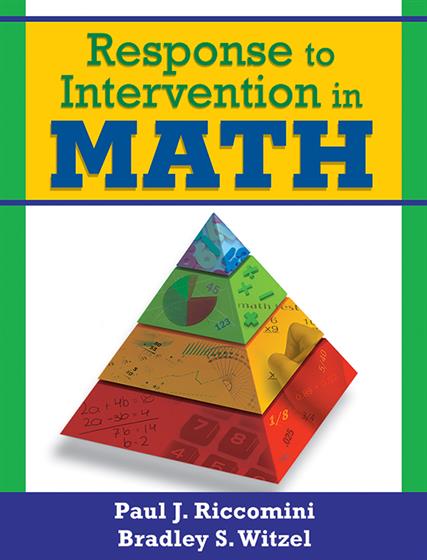Preface
Acknowledgments
About the Authors
1. What Is RTI, and Why Is It Important?
Overview of RTI
Key Research Support for RTI and Mathematics
Summary
2. The RTI Process for Math: Getting Started
Selection of the RTI Team Members
Belief System
Common Models of Implementation
Assessment
Importance of the Core Mathematics Program
Summary
3. A Tiered Approach to More Effective Mathematics Instruction
Tier 1 Instruction and Curriculum
Tier 2 Intervention and Curriculum
Tier 3 Instruction and Curriculum
Summary
4. Mathematics Interventions Overview
Who Needs Intervention?
What Do I Teach for the Intervention?
Who Should Intervene?
Where?
How Long?
How Do I Organize My Curriculum?
What Types of Curricular Strategies Should Be Used for Tier 2 and Tier 3 Interventions?
Summary
5. Number Sense and Initial Math Skills
Assessments of Number Sense
Instructional Delivery of Number Sense
Curricular Elements of a Number Sense Intervention
In Context
Summary
6. Building Students' Proficiency With Whole Numbers
Importance of Proficiency in Whole Numbers
General Recommendations for Building Proficiency
Building Automatic Recall of Basic Facts With the Mastering Math Facts Program
Building Proficiency With Whole Numbers Through PALS Math
Summary
7. Fractions and Decimals
Fractions in the Standards
Assessment for Fractions and Decimals
When Are Calculators Sufficient?
Teaching the "What" With Fractions and Decimals
Teaching the "How to Compute" With Fractions and Decimals
Teaching Fluency With Fractions and Decimals
In Context
Summary
8. Teaching Problem Solving Strategically
Problem-Solving Programs
Summary
9. The Importance of Teaching Mathematical Vocabulary
The Importance of Teaching Mathematical Vocabulary
Instructional Activities to Promote Learning of Essential Mathematical Vocabulary
Assessing Students' Knowledge of Mathematical Vocabulary
Summary
10. Next Steps in the RTI Process
Professional Development
Reconsidering the Tier 1 Mathematics Curriculum
Why Is This Important for Educators Implementing an RTI Math Model?
An Alternative Approach: A Two Tier 1 Core Mathematics Program
Summary
References
Index




